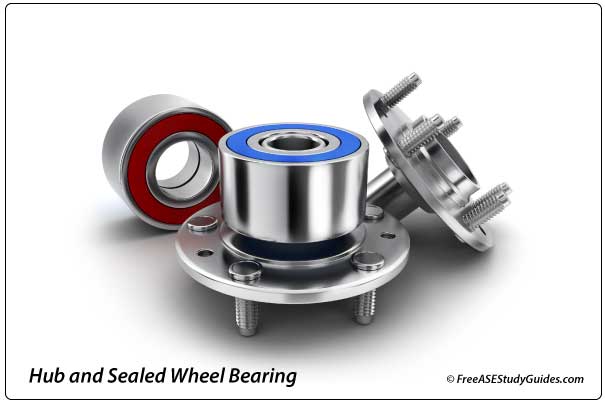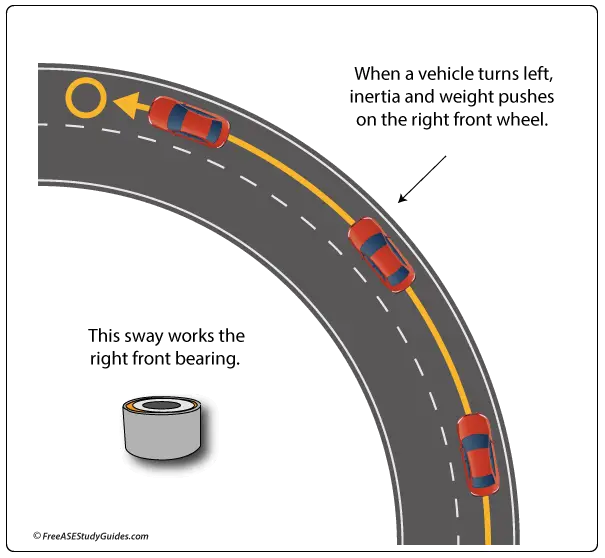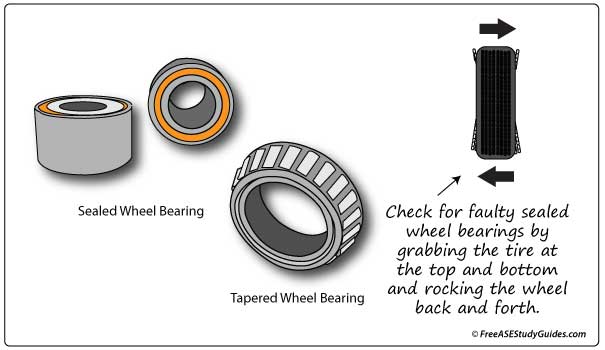Wheel Bearing Noise

Diagnosing Wheel Bearing noise can be difficult because the sound is similar to cupped or knobby off-road tire tread patterns. Each results in a growling noise that increases with speed. There are several ways to tell the difference.

A loose wheel bearing makes more noise while turning around a corner than a scalloped or cupped tire. The noise is worse on the side with the bad bearing. Good wheel bearings allow the wheel to spin smoothly.
Wheel Bearing Diagnosis

Overinflate the tire associated with the noise a few pounds and see if the noise changes. If it does, move the tire to another position and test drive the vehicle to verify suspicions. Special listening devices amplify the noise created by a worn bearing, making distinguishing it from other components easy. During the initial inspection, grasp the tire at the top and bottom and rock it back and forth. There should be no movement with sealed bearings and very little with tapered bearings.